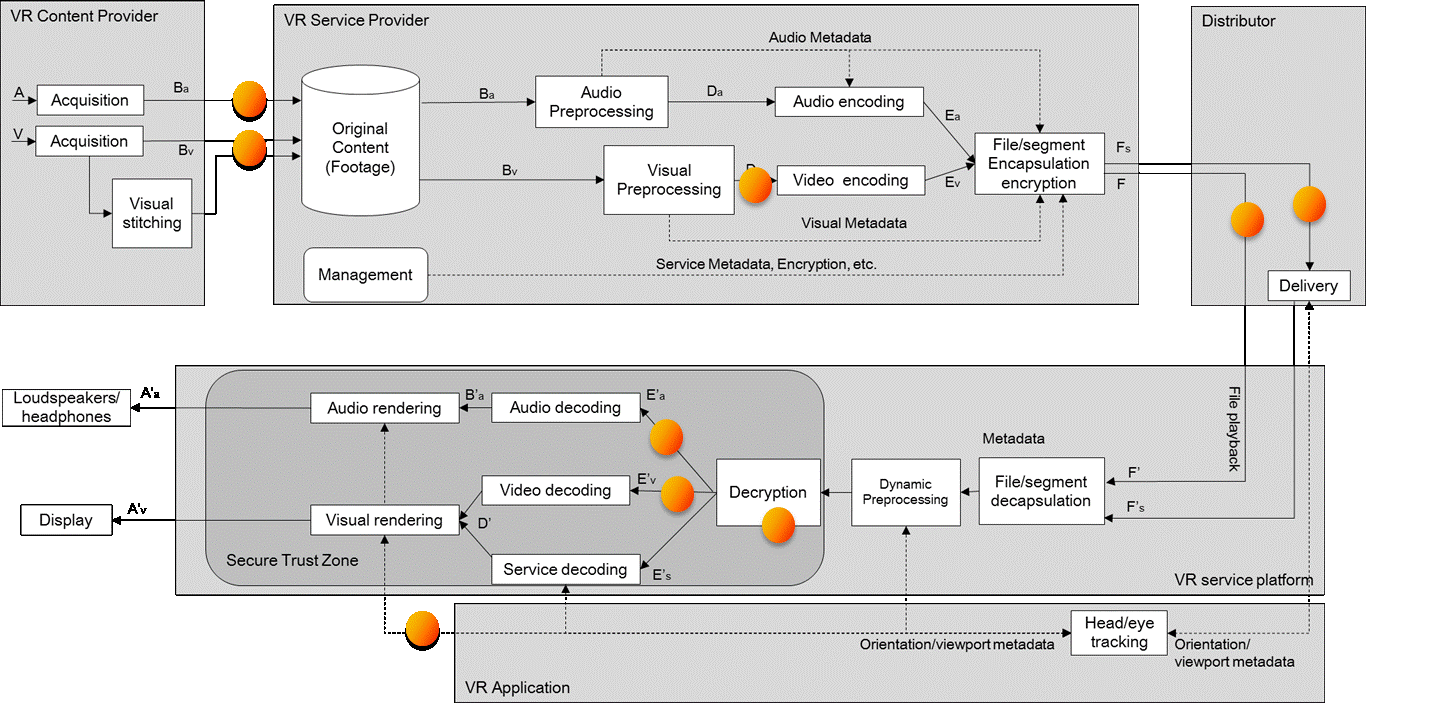Volumetric Video Guidelines 1.0
ABOUT THIS VERSION OF THE GUIDELINES
This version of the VR Industry Forum (VRIF) Volumetric Video Guidelines builds upon version 0.95, adding recommendations on Security for volumetric content.
Volumetric Video Guidelines v0.95
ABOUT THIS VERSION OF THE GUIDELINES
This is the first draft for public review of Industry Guidelines for Volumetric Video Streaming.
These guidelines are the first of its kind to cover volumetric video streaming from an end-to-end perspective. The guidelines cover aspects of production, distribution, and consumption of volumetric video assets. In particular, the guidelines address:
- Volumetric video production workflows for meshes and point clouds
- A survey of most common volumetric capture systems
- A media profile standard for distribution using Video Point Cloud Compression (V-PCC) using HEVC
A short introduction of the Volumetric Video Guidelines can be found here: video link + pdf presentation
Guidelines 2.3
ABOUT THIS VERSION OF THE GUIDELINES
This version of the VR Industry Forum (VRIF) Guidelines builds upon version 2.2, adding recommendations on:
- A new viewport-independent delivery profile, which is aligned completely with MPEG’s unconstrained HEVC-based viewport-independent OMAF video profile defined as part of ISO/IEC 23090-2 OMAF 2nd edition, which could be used to deliver 8K content with additional support for HEVC Main 10 Profile, Main Tier, Levels 6, 6.1 and 6.2 at the bitstream conformance and decoder level at the respective frame rates of 30fps, 60fps and 120fps,
- A new viewport-dependent delivery profile based on the unconstrained HEVC-based simple tiling OMAF video profile defined in OMAF 2nd edition, which could be used to deliver 8K content with additional support for HEVC Main 10 Profile, Main Tier, Levels 6, 6.1 and 6.2 at the bitstream conformance and decoder level at respective frame rates of 30fps, 60fps and 120fps,
- Recommendations and best practices around multiple viewpoints and overlays, which were also introduced recently by MPEG as new 360-degree video format features as part of ISO/IEC 23090-2 OMAF 2nd edition.
Guidelines 2.2
ABOUT THIS VERSION OF THE GUIDELINES
This version of the VR Industry Forum (VRIF) Guidelines builds upon version 2.1, adding recommendations on:
- A new media distribution profile for viewport-independent delivery of 8k video content
Guidelines 2.1
ABOUT THIS VERSION OF THE GUIDELINES
This version of the VR Industry Forum (VRIF) Guidelines builds upon version 2.0, adding recommendations on:
- Live VR Service Deployments of TiledMedia and Intel Sports
- Additional Guidelines on Presentation APIs based on Khronos OpenXR 1.0
Guidelines 2.0
ABOUT THIS VERSION OF THE GUIDELINES
This version of the VR Industry Forum (VRIF) Guidelines builds upon version 1.1, adding recommendations on:
- Producing and distributing Live VR services
- The use of text and fonts in VR experiences
- Watermarking of 2D framed content in Theatrical VR
- The use of HDR in VR content presentation – what works and what does not
- A new media profile with a high-quality field-of-view
Guidelines 1.1
ABOUT THIS VERSION OF THE GUIDELINES
The VR Industry Forum (VRIF) has developed a set of Guidelines to support the industry in the implementation of the interoperable systems for the production and delivery of 360 degree video content. The Guidelines document was originally published by the VR Industry Forum in March 2018 as version 1.0 and updated in June 2018 with minor corrections and additional clarifications, following an announcement and the publication of a final draft at CES in January 2018.
Both technical and perceptual aspects are represented in the Guidelines. The interoperability Sections in the current version of the Guidelines focus on 9 key aspects, denoted by the orange balls in the figure below.
